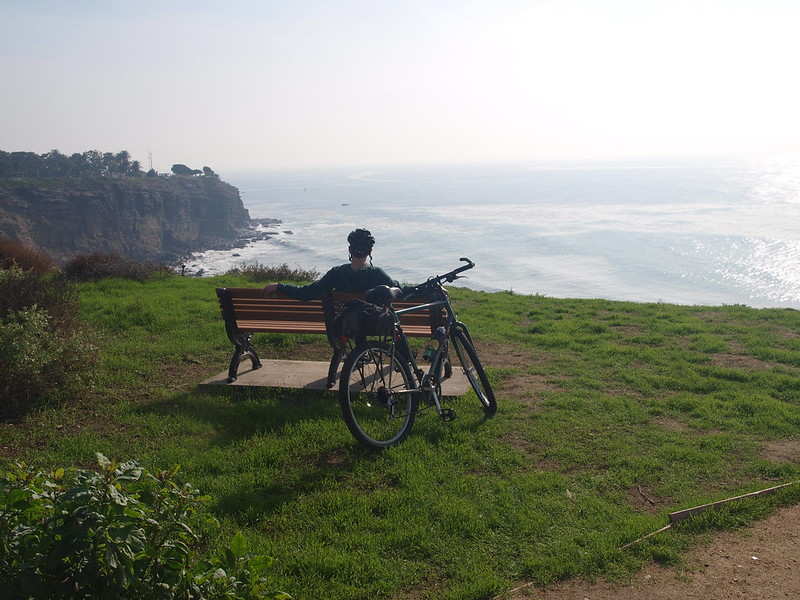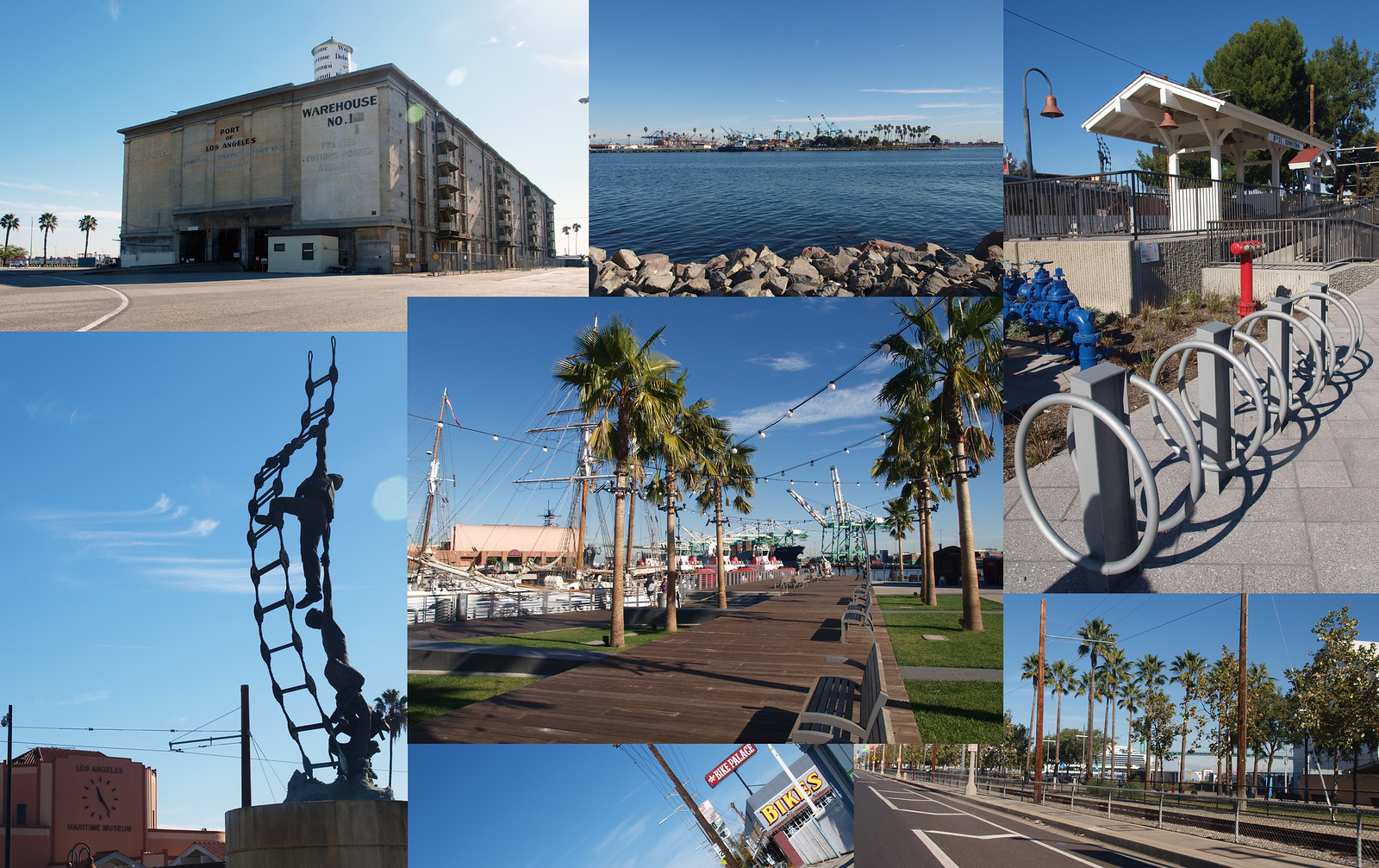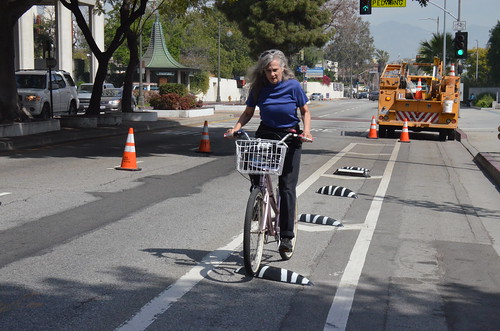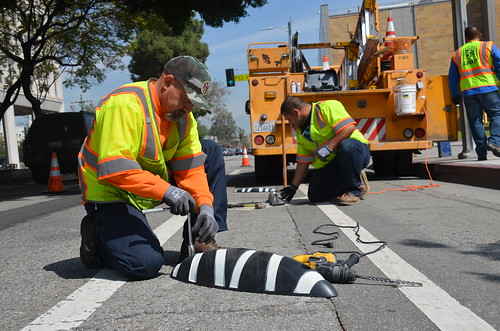Bicycle tourism has been well observed and practiced as a recreational activity across the United States, but often we fail to remember the multitude of sightseeing opportunities right here within our city’s diverse neighborhoods. As Los Angeles’ bicycle network and multi-modal connectivity expands, we have more and more opportunities get out of our cars and explore new areas by bicycle. There’s no better way to spend a sunny Sunday than exploring Los Angeles’ hidden gems. We thought we would share our favorite bicycle routes and points of interest in and around San Pedro, one of L.A.’s most scenic and bikeable neighborhoods.

Clockwise from top left: The Corner Store, view from Paseo Del Mar looking north; bike lane signage; Metro Bus 246; palms at Point Fermin Park; Point Fermin Lighthouse; and buffered bike lanes on Paseo Del Mar.
Located 25 miles south of Downtown L.A., San Pedro is home to some of the city’s most breathtaking vistas and historical sights, not to mention bike lanes and paths that even novice riders will enjoy. Our journey begins on San Pedro’s Paseo Del Mar, accessible via the terminus of Metro Bus 246 at Paseo and Parker St. Cruise Paseo’s bike lanes and check out the breathtaking cliff-side views of the Pacific and Catalina Island. Stop by local haunt, the Corner Store to refuel with coffee and snacks before making your way east to Point Fermin Park, home of legendary Walker’s Café and the Point Fermin Lighthouse, built in 1874.

Taking in the view on Paseo Del Mar.
From Point Fermin, it is a quick 5 minute ride down Shepherd and Pacific Avenues to Cabrillo Beach, where you can check out the Cabrillo Marine Aquarium and the nearby tide pools. If squids and urchins aren’t your thing, enjoy the views along the beachfront bike path and fishing pier. Head north on sharrowed Shoshean Road toward 22nd Street where twenty-second Street Park’s scenic bike path will lead you straight to Crafted at the Port of Los Angeles, San Pedro’s new artisan marketplace located in a beautifully restored warehouse.
After picking up some homemade marmalade, head up the hill to Beacon St. to check out the Muller House Museum (open Sundays only), a cherished jewel of San Pedro’s past. Other great sights in the vicinity include: the WPA murals in the San Pedro Post Office on Beacon St, recently constructed Cabrillo Way Marina and Warehouse No. 1 at the south end of Signal St, which is listed on the National Register of Historic Places.

Clockwise from top left: Warehouse No. 1; view from Signal St., bike parking at the Red Car Downtown Station, bike lane on Harbor Blvd., a glimpse of the Bike Palace on Pacific Ave., the Merchant Marine Memorial and Maritime Museum off Harbor Blvd. Center: A brand new boardwalk just north of the Maritime Museum.
Take a well-deserved break at Utro’s Cafe right off of Sampson Way, home to arguably the best burger in town. Peruse Utro’s extensive collection of memorabilia to learn a bit about the history of longshore workers in San Pedro. If you’re still up for more San Pedro sights after lunch, take a stroll around the quaint shops at Ports O’Call. From here you can also take the short trip north to the fantastic Battleship USS Iowa and Los Angeles Maritime Museum both accessible via the bike lanes on Harbor Blvd.
If you want to give your legs a rest, hop on the Historic Waterfront Red Car Line, one of the last remaining vestiges of Los Angeles’ railcar past or enjoy the water show at Gateway Plaza, featuring two Fanfare fountains by WET Design. When you’re ready to catch the 246 back north, take bike-friendly 9th, 13th, or 14th Streets 4 blocks west to Pacific Ave.
Since there’s so much more to see in San Pedro – like the Warner Grand Theater and Korean Bell, just to name a few- feel free to leave us your suggestions for other great bike-friendly sights in town! Also, let us know if you have any suggestions for other bikeable L.A. neighborhoods you would like to see us explore on the blog.
More great resources for your trip: Bike Palace (located on Pacific Ave. and 16th St.); bicyclela.org (for bike maps and parking info)
Read Full Post »
















